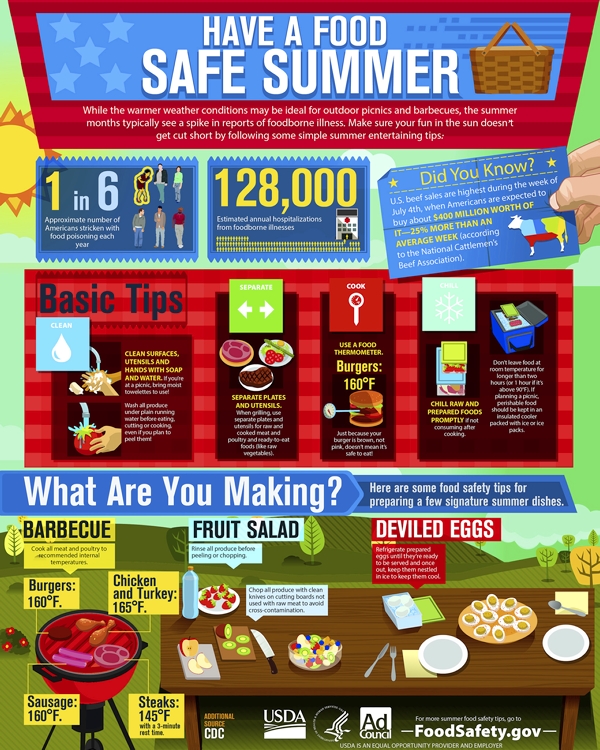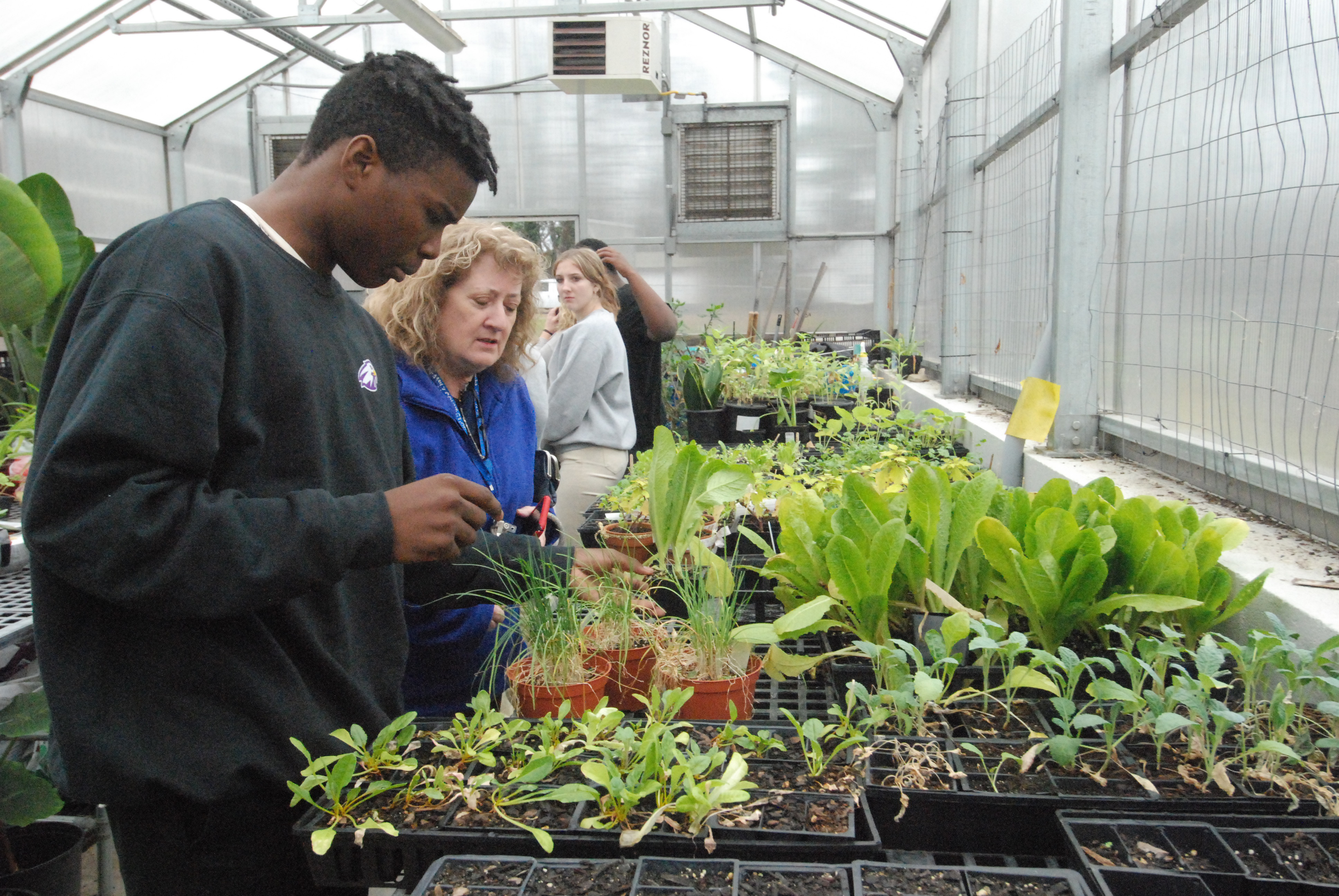Summer prompts need for safe food handling
Published 12:00 am Monday, June 20, 2016
By Toi Degree
For the Salisbury Post
SALISBURY — Summer has officially arrived. Monday marked the first day of summer, and you know what that means — grills begin to heat up even more, although more than half of Americans say that they cook outdoors year-round.
So, whether the snow is blowing or the sun is shinning, it’s important to follow food safety guidelines to prevent harmful bacteria from multiplying and causing food-borne illness.
Remember: from the moment you purchase food until the time it is consumed, there is potential for cross-contamination as well as time and temperature abuse. Continue reading as I walk you through each phase of barbecuing.
From the store: Home first — When shopping, buy cold food such as meat and poultry last or right before checkout. Be sure to separate raw meat and poultry from other food in your shopping cart; this is a safe-guard against cross-contamination. Cross-contamination occurs when raw meat or poultry juices drip on to other food; always put raw meat and poultry in plastic bags.
Go directly home after your grocery store visit. Perishable foods need to be refrigerated within two hours or one hour if temperatures are 90 or above. Once at home, place meat and poultry in the refrigerator immediately. If you are not planning to use poultry or ground meat within one to two days, freeze. Freeze other meat within four to five days.
Thaw safely — Completely thaw meat and poultry before grilling; it will cook more evenly. Use only these methods to thaw: refrigerator, cold water or microwave. Use the refrigerator for slow, safe thawing.Be sure that meat juices do not drip onto other food. Use cold water for faster thawing by placing food in a leak-proof plastic bag. Submerge in cold tap water. Change the water every 30 minutes. Cook immediately after thawing. Cook meat or poultry by microwaving immediately after microwave thawing.
Marinating — Marinades are savory acidic sauces in which a food is soaked to enhance its flavor or to tenderize it. Marinate food in the refrigerator, not on the counter. Poultry, cubed meat, or stew meat can be marinated up to two days. Beef, veal, pork, lamb roasts, chops and steaks may be marinated up to five days. You may choose to reserve a portion of the marinade as a sauce while cooking, however, if the marinade used on raw meat or poultry is to be reused, it MUST be boiled. Make sure to let it come to a complete boil first to destroy any harmful bacteria; do not use otherwise.
Transporting — When carrying food to another location, keep it at a safe temperature. Keep cold foods cold and hot foods hot. Cold foods should be kept under 40 degrees to minimize bacteria growth. Use an insulated cooler with sufficient ice or ice packs. A good practice is to pack food right from the refrigerator to the cooler immediately before leaving home. Hot meat should be kept hot until served at 140 degrees or warmer.
Keep everything clean — Be sure to have plenty of utensils and platters on hand. Do not use the same utensils and platters for both raw and cooked meat. Raw meat and poultry may contain harmful bacteria that can contaminate safely cooked meat.
Cook thoroughly — Cook food to a minimum internal temperature to destroy harmful bacteria. Invest in a food thermometer to be sure that food has reached a safe minimum internal temperature. Precooking is often used to decrease grilling time; this is when food is partially cooked in the microwave, oven, or stove. Just make sure that the food goes immediately on the preheated grill to complete cooking.
Keep hot food hot — When taking food off of the grill, be sure to use a clean platter. Do not put cooked food on the same platter that held raw meat or poultry. This is where cross-contamination can occur; any harmful bacteria that may be present in the raw meat juices can contaminate safely cooked food. In extremely hot weather (90 degrees or above), food should not sit out for more than one hour.
Leftovers — Refrigerate any and all leftovers promptly in shallow containers. Discard any food left out for more than two hours (one hour if temperatures are above 90 degrees).
Additional tips:
• NEVER partially grill meat or poultry and finish cooking later.
• Reheating – When reheating fully cooked meat like hotdogs, grill to 165 degrees or until steaming hot.
• Safe Minimum Cooking Temperatures – use this chart and a food thermometer to ensure that meat, poultry, seafood, and other cooked foods reach a safe minimum internal temperature.
Remember, you can’t tell whether meat is safely cooked by looking at it. Any cooked, uncured red meats — including pork — can be pink, even when the meat has reached a safe internal temperature.
Why the rest time is important — after you remove meat from a grill, oven or other heat source, allow it to rest for the specified amount of time. During the rest time, its temperature remains constant or continues to rise, which destroys harmful germs.
For more information about barbecuing and food safety, you may visit the USDA website at: http://www.fsis.usda.gov/wps/portal/fsis/topics/food-safety-education/get-answers/food-safety-fact-sheets/safe-food-handling/barbecue-and-food-safety/ct_index
Toi Degree is the family & consumer education agent with the North Carolina Cooperative Extension, Rowan County Center. You can reach Toi at 704- 216- 8970 or toi_degree@ncsu.edu.







